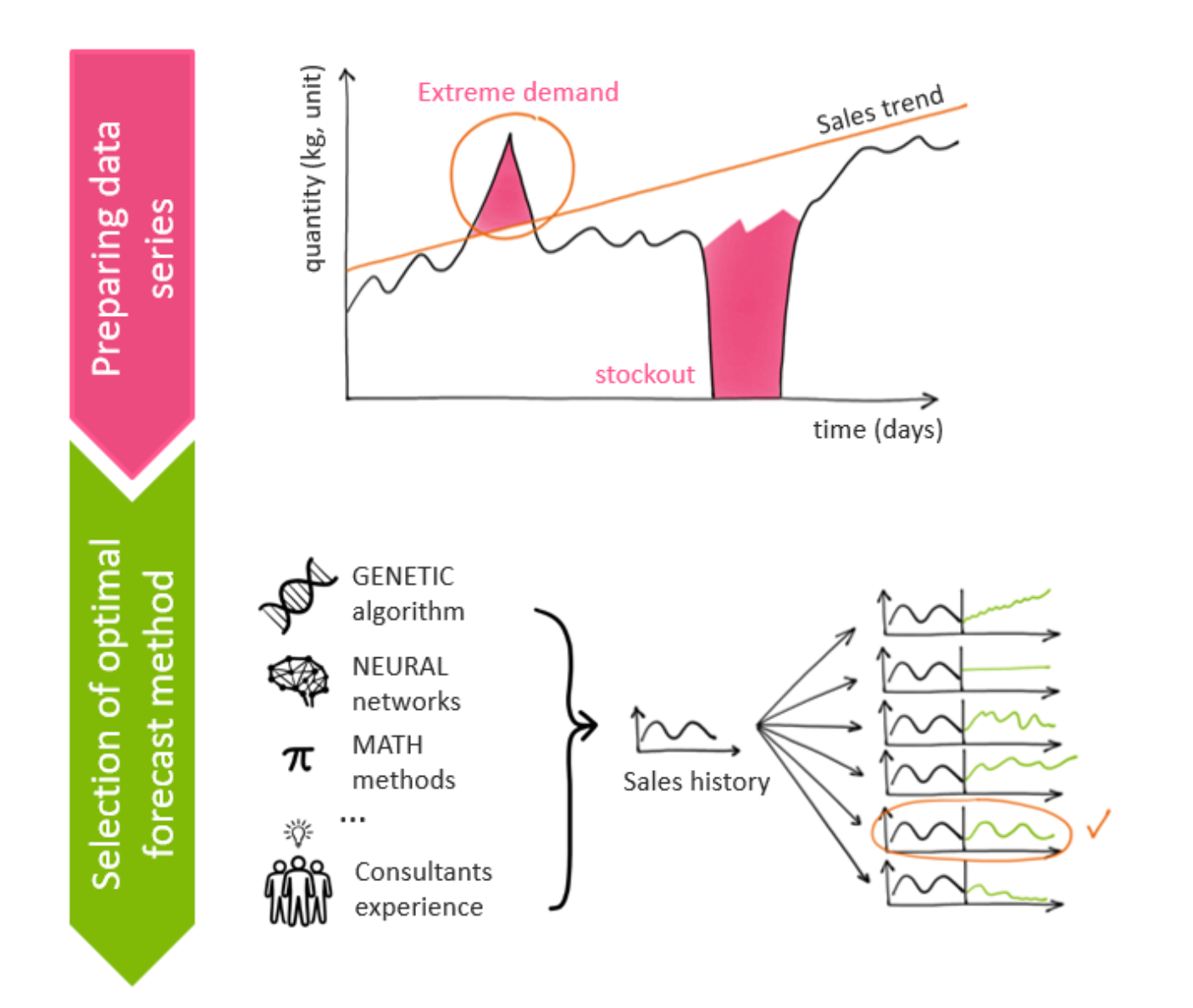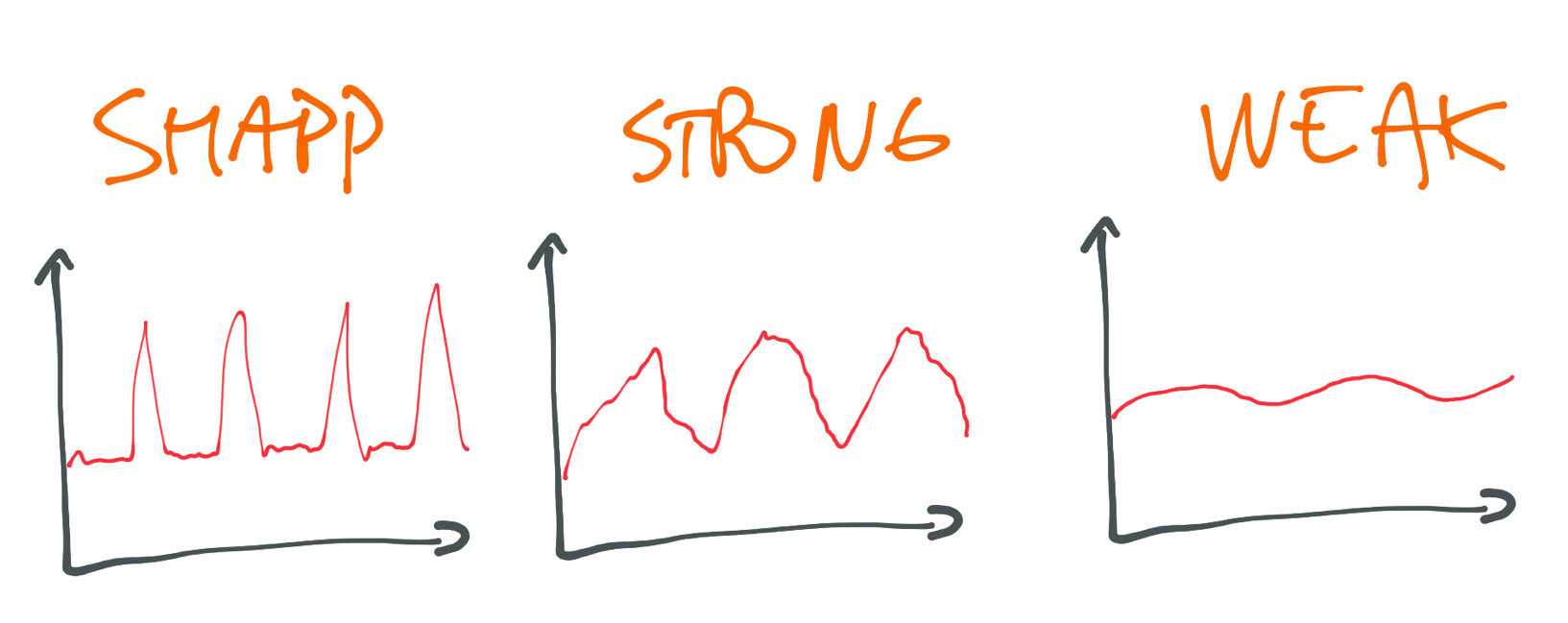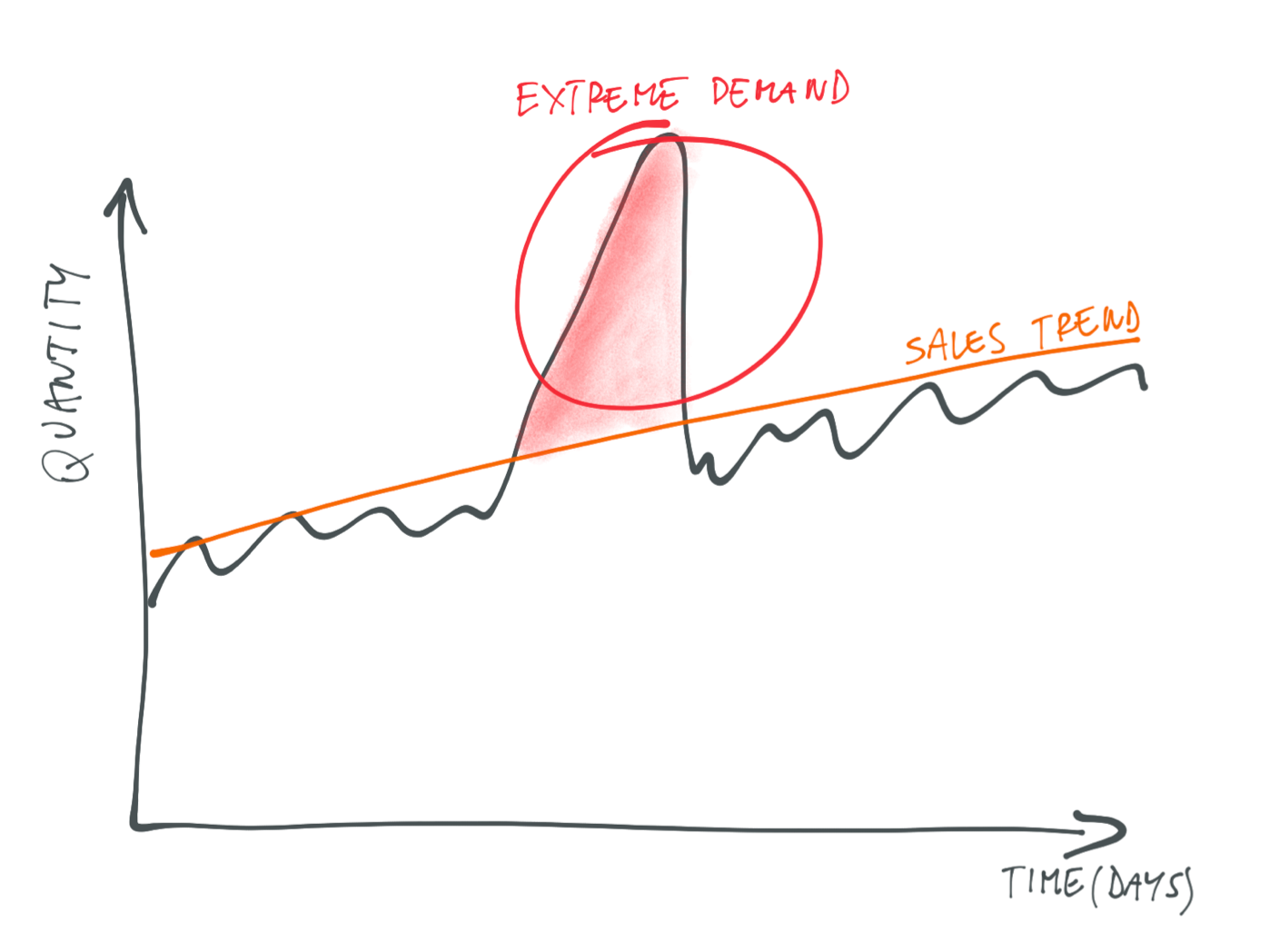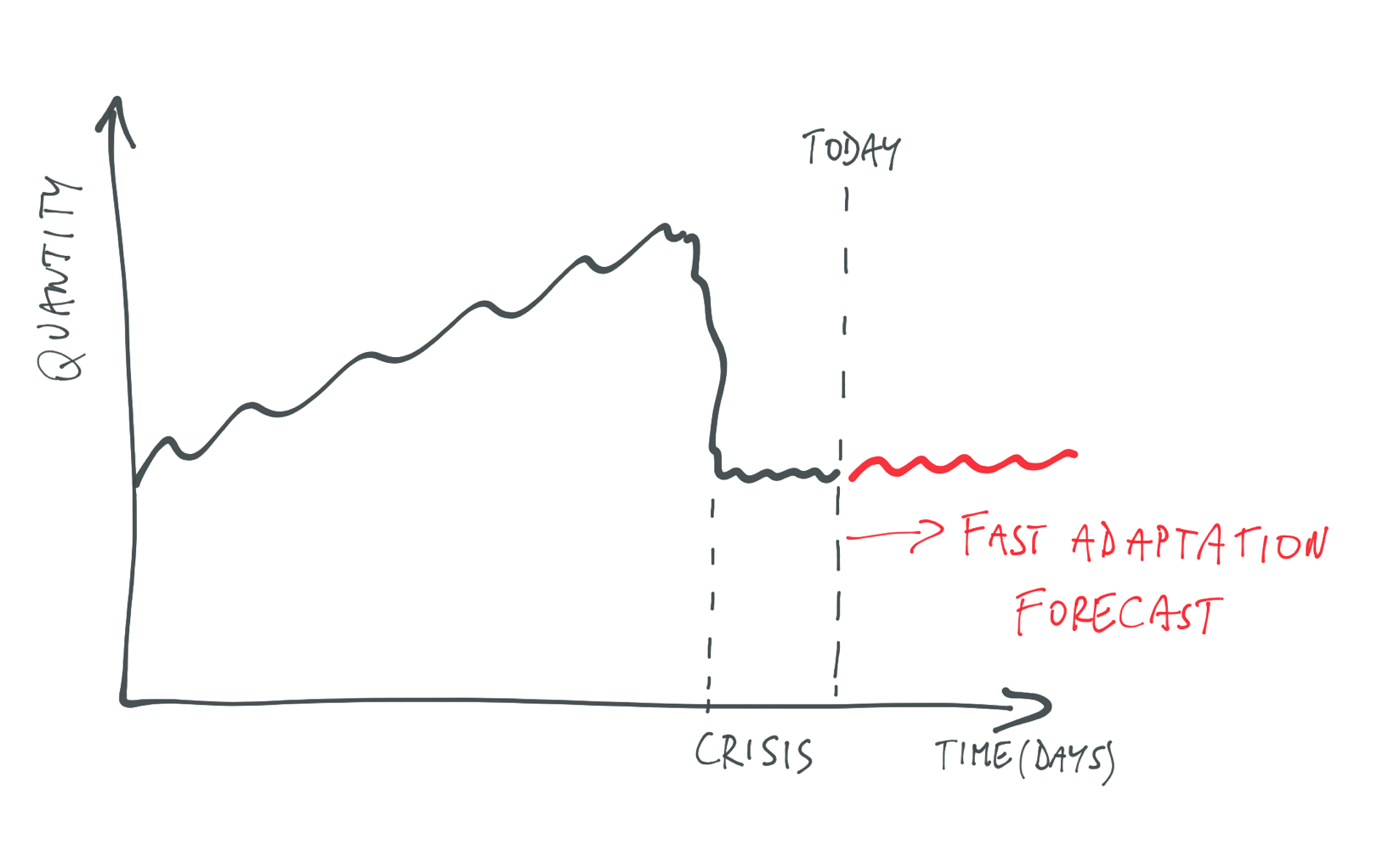What is Sales forecasting?
Sales forecasting is the process of estimating future sales based on analysis of historical sales.
Sales Forecasting
Sales forecasting is the core functionality of VERITICO.cloud.
VERITICO Sales Forecasting is designed to compute the most accurate forecast of future sales, with precision up to days. There are two subsections: the specific preparation of a data series (so that the data can be used for sales forecasting) and the actual mathematical core of the forecasting.
As a rule, we forecast sales at the lowest possible level: in most cases, we forecast sales for a product at a particular warehouse or a store. Under certain circumstances, we may be able to refine the forecast even more and thus predict unique sales to a customer.

Preparing a data series
Before sales can be forecast, it is extremely important to adjust an individual data series (sales of individual items) for algorithmic forecasting.
First and foremost, this means cleaning the data by removing extreme sales and adjusting the sales for possible stockouts (the product would have been sold if there had been enough inventory).
In this section, we deal with various analyses of the data series: they will – if the right mathematical algorithm is applied – help us to choose the correct method of sales forecasting.

Identification of seasonality
One of the most important parts of this section is the analysis of seasonal sales.
The algorithm can identify extreme seasons, such as Christmas or extremely seasonal items like Easter eggs.
Types of seasonality
- sharp seasonality
- strong seasonality
- weak seasonality

Analysis of extreme sales
VERITICO detects extremes in sales on the one hand and orders received from individual customers on the other. The received orders also need to be cleaned, as they enter into sales forecasts as well.
The basic principle is to identify sales that are so extreme that they are not likely to be repeated, and even if they do repeat, we do not want them to be our base for sale forecasts and stock level computations. The reason behind this is that if we were to keep safety stock at such a level to satisfy extreme sales, the stock would have to be enormously high.
The module is able to take into account promotions, and it also works with seasonality of sales (including movable holidays).

Analysis of stockouts
VERITICO identifies and subsequently analyzes stockouts, periods with no stock on hand. This data is then used to compute lost sales at stockout of a specific item in your warehouse.
Thanks to this we can:
- Evaluate losses in revenue and profit that the company experiences due to the stockout and to compute the desired service level.
- Use stockout history as an input to the module to manage customer service levels.
- Straighten historical sales and thus provide an appropriate input to sales forecasting. The sale forecast must reckon with the fact that sales would have continued if there had been no stockout.

Trimming irrelevant history
Forecast algorithms give the best results if the inputs are as meaningful as possible; in this case, a reasonable sales history is a must. One of the recommended modifications is to trim such a sales history that no longer makes sense: either a trend in sales has changed dramatically or average monthly sales have significantly increased or decreased.
The module is also useful for trimming sales around the introduction of a new product, where the product sells at a considerably lower level (before the market accommodates the product) or on the contrary, sells considerably more at first than later (especially if the sale of the product started with a massive campaign).
Computing sales forecasts
When the forecast uses an adjusted sales history (see above), we use three different sales forecasting strategies:
- bottom-up
- top-down
- middle-out
Our mathematical engine has more than 80 different forecasting methods, from very primitive ones like moving averages to very complex machine learning using deep learning approaches.
VERITICO calculates sales forecasts on a monthly, weekly, and daily basis.
Our architecture is built on internal competition and a day-to-day mentality of improvement, like professional sportsmen. They don’t become champions overnight. Instead, they work on the little things every day to reach world class results. The way it works is that we use our algorithms one by one to analyze data sets and produce forecasts. Then we put them up against each other and let them compete with one another to see which performs best. The next day we do it again, and the day after that again, and again, and again. This helps us to see progress every day, constantly improving our results.
Around half of the methods we use are built upon the work of the great mathematicians of our generation. We use forecasting equations from great minds like Holt, Winters, and Croston. We admire their work, and us being us we constantly look for ways to improve their equations even more. It has taken years, but we have found our own paths to perfection.
The second half of our methods use principles of AI and mainly deep learning. We use complex four-layer models which learn datasets and often come up with surprising forecasting results. The issue with these methods is that they become effective with only vast amounts of data, and not every product in the customer’s portfolio can produce such quantities.
So for us it is not about using buzzwords and insisting that only AI is the future. It probably is, but remember, we are data driven. We measure everything constantly. If AI outperforms standard math, fine! If it doesn’t, that's okay, too. It’s the results that matter, not the marketing headlines or trendy blog posts.
Fast adaptation of a sales forecast
The module rapidly captures all changes in sales (both increases and decreases). It then analyzes the last few weeks of sales, and if they significantly differ from the sales forecast based on longer-term history (going back several years), then the forecast for the upcoming period is adjusted.
These changes can occur for various reasons (competition, weather conditions, etc.), and the algorithm is designed to respond to these influences. The module Fast adaptation is particularly useful for fast-moving consumer goods and goods with a high elasticity of sales.
Fast adaptation algorithms adjust forecasts and adapt to sudden sales fluctuations.
The purpose of the module Fast adaptation is to detect a sudden non-standard market development and adapt your offer to step changes in the demand for your products. The Fast adaptation module adjusts and smooths the current forecast in such a way as to increase the level of customer service, which could drop under the onslaught of demand growth.

Sales forecast for promotions
VERITICO can work with promotions and the number of products sold in a promotion. The analysis is intended for short promotions (up to 60 days), and it is ideal for one- or two-week promotions with leaflets or any other type of promotion, whether in your e-shop or some other type of discount.
There are three main parts to the analysis of promotions:
- First, we must estimate what would have been sold in a given period in the past without any promotions.
- Second, we have to forecast how much of the product will be sold in promotion with the given parameters (length of the promotion, discount, leaflets, secondary placement, gifts, etc.)
- Finally, we have to split the forecast quantity of product sold into individual days, based on a typical promotion of the given type.
How do we calculate real promotions?
Our engine is able to automatically detect four parts of promotions:
- pre promotion effect - is the situation before the promotion, when your customers are waiting for the promotion and your sales is little bit decreasing
- promo effect - forecast of sales due to promotion
- post promotion effect - after promotion the market is saturated and your sales will decrease for next for example 14 days
- cannibalization effect - when you decide to put some article to the promotion there will be a list of articles which will decrease in sales due to this promotion


